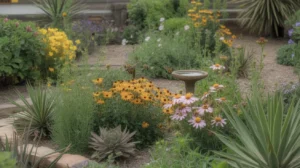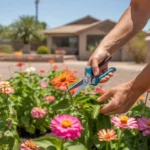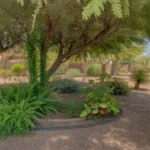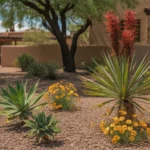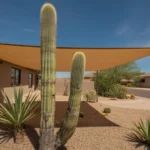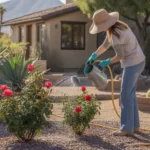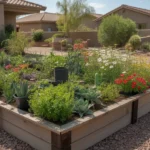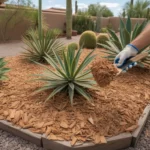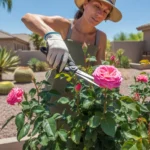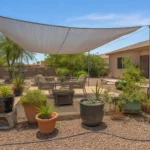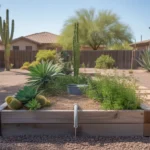Pollinator gardens are a beautiful and beneficial addition to any Gilbert yard. By planting the right mix of native flowers and plants, you can create a haven for bees, butterflies, hummingbirds and other essential pollinators. With a few smart tips, it’s easy to design a thriving pollinator paradise right in your own backyard.
Choose Native Plants for Your Gilbert Pollinator Garden
One of the most important things to consider when planning a pollinator garden in Gilbert is plant selection. Native plants are always the best choice, as they are uniquely adapted to thrive in our hot, dry climate. Local pollinators have also evolved alongside these plants, making them especially attractive.
Some excellent native options for Gilbert pollinator gardens include:
- Desert marigold
- Goodding’s verbena
- Chuparosa
- Fairy duster
- Desert milkweed
- Globe mallow
- Penstemon
By incorporating a diverse mix of these native flowers, shrubs and groundcovers, you’ll create an irresistible buffet for local pollinators. As an added bonus, native plants tend to be very low-maintenance once established, requiring minimal water and care to thrive in Gilbert conditions.
Provide a Variety of Flower Shapes and Sizes
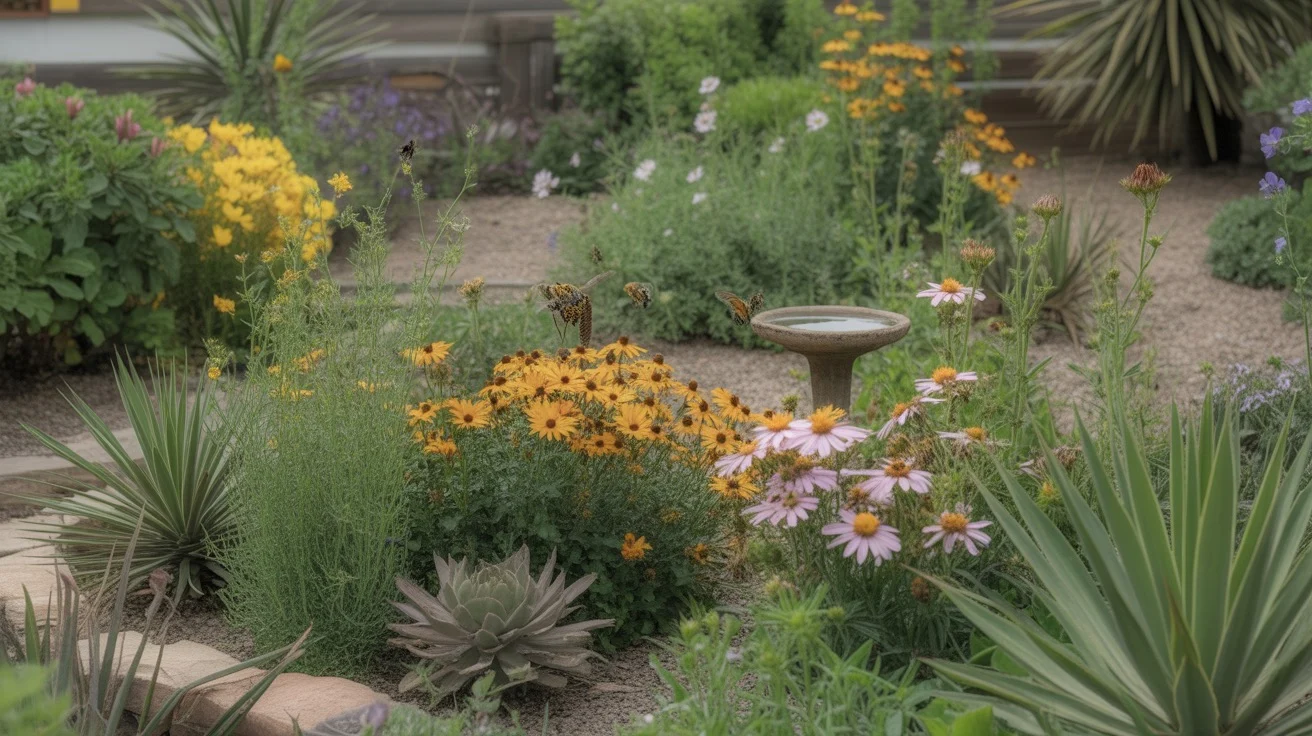
Different pollinators are attracted to different types of flowers. Bees and butterflies love landing on flat, open blooms, while hummingbirds prefer tubular flowers perfectly shaped for their long beaks. To attract the greatest diversity of pollinators to your Gilbert yard, include an assortment of flower shapes and sizes.
Great flat-topped flowers for bees and butterflies include zinnias, daisies, coneflowers and yarrow. For the hummingbirds, add some coral bells, desert honeysuckle, and sage. By offering something for everyone, your pollinator garden will be abuzz with activity throughout the seasons.
Variety in plant height is also key. Incorporate a range of low-growing groundcovers, medium-sized perennials, and taller shrubs and spikes. This layered approach mimics natural ecosystems and provides pollinators with plenty of options for food and shelter at every level.
Plant in Clusters for a Pollinator Buffet
While diversity is important, planting in clusters is equally crucial. Most pollinators prefer to feed from large groups of the same flower type. It’s a more efficient way for them to gather nectar and pollen as they don’t have to travel far between blooms.
When designing your Gilbert pollinator garden, plant each species in clumps of at least 3-5 plants. This will create eye-catching drifts of color and make it easier for pollinators to spot their favorite flowers from a distance. Aim for clumps that are at least 3 feet in diameter for maximum impact.
As your pollinator garden grows and fills in, don’t be afraid to let it get a little wild. A slightly unkempt look is more attractive to pollinators than a perfectly manicured space. Let some of your herbs and vegetables bolt and flower – the bees will love you for it!
Provide Shelter and Water for Pollinators
Pollinators need more than just food to thrive. They also require places to rest, nest, and hydrate. Incorporate some non-plant features into your Gilbert pollinator garden to make it a true haven.
Leave some bare patches of soil or sand for ground-nesting bees. Add a few rocks or logs for butterflies to bask on. Build or buy a bee hotel to provide cavity-nesting bees with a cozy home. And don’t forget the water! A shallow birdbath or fountain will give thirsty pollinators a place to drink and cool off during hot Gilbert summers.
Even leaving some leaf litter and standing dead plant stems in your garden can help. Many beneficial insects, including pollinators, lay eggs or overwinter in these materials. By resisting the urge to over-tidy, you’ll create a more robust and resilient ecosystem.
Avoid Pesticides in Your Pollinator Garden
Pesticides and pollinators don’t mix. Even organic or “natural” pest control products can harm bees, butterflies and other beneficial insects. In your pollinator garden, it’s best to avoid using any pesticides at all.
If pest issues do arise, always start with the most gentle control methods first. Hand-pick larger insects like beetles and caterpillars. Use a strong spray of water to dislodge aphids. Encourage beneficial predators by planting flowers like sweet alyssum and dill.
In most cases, a healthy, diverse garden will regulate itself without the need for chemicals. Tolerate a little bit of pest damage and trust that the pollinators and other good bugs will help keep things in balance. Your garden may not be picture-perfect, but the buzzing activity will more than make up for a few nibbled leaves!
Enjoy the Beauty and Benefits of Your Gilbert Pollinator Garden
Creating a pollinator garden is one of the most rewarding things you can do for your Gilbert yard. Not only will you be treated to a dazzling display of colorful blooms and busy pollinators, but you’ll also be providing a vital service to the ecosystem.
Pollinator populations are in decline worldwide due to habitat loss, pesticide use, and climate change. By turning your yard into an oasis for these essential creatures, you can help support biodiversity and ensure a more sustainable future. Plus, all of those busy bees and butterflies will help keep your garden healthy and productive.
As you sit back and enjoy the fruits of your labor, take pride in knowing that you’ve created a beautiful and meaningful space. Your Gilbert pollinator garden is so much more than just another pretty yard – it’s a powerful tool for conservation and connection with the natural world.

